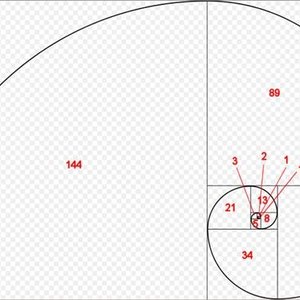
Thirteenth-century mathematician Fibonacci of Pisa, in trying to find the solution to a math problem about rabbits, stumbled onto a sequence of numbers that have been found to mimic natural growth cycles. The series is as follows: 0, 1, 1, 2, 3, 5, 8, 13, 21, 34, 55, 89, 144 ... up to infinity. Each number after 8 is 1.618 times the previous number and 0.618 times the next number, and this is commonly called the golden ratio. The series is commonly used by technical analysts to spot support and resistance levels for a stock price. The percent movement of the stock price is called a retracement. While no method of market analysis is ever 100 percent accurate, the retracement method has proved reliable enough that it's become a standard tool.
Review the calculation. The Fibonacci series is first calculated by taking one number (0) and adding 1 to it. Each subsequent number is created by adding the previous two numbers in the series. The equation is (0 + 1 = 1) ... (1 + 1 = 2) ... (1 + 2 = 3) ... (2 + 3 = 5) ... (3 + 5 = 8) ... (5 + 8 = 13) ... (8 + 13 = 21) ...
Define retracement. Fibonacci numbers are often used in technical analysis to determine support and resistance levels for stock price movement. Analysts find the two most extreme points (peak and trough) on a stock chart and divide by the Fibonacci ratios of 23.6 percent, 38.2 percent, 50 percent, 61.8 percent and 100 percent. The key Fibonacci ratio, 61.8 percent, is found by dividing one number in the series by the number that follows it. For example: 55 / 89 = 0.6179. The 38.2 percent ratio divides one number in the series by the number two places to the right. For example: 55 / 144 = 0.3819. The 23.6 percent ratio divides one number in the series by a number three places to the right. For example: 8 / 34 = 0.2352. A 38.2 percent retracement (stock price movement toward support or resistance levels) usually implies that the trend will continue, 61.8 percent retracements point to a new trend, and 50 percent retracements point to a neutral trend characterized by market indecision on the direction of the price.
Define your variables. Let's calculate the retracement for ABC stock at $50 at the 38.2 percent ratio. The stock made a high 3 months ago at $100 and moved to a low of $40 today.
Calculate the down movement. The down movement equals stock high ($100) - stock low ($40). The total price movement is $60.
Calculate the resistance level at the 38.2 percent Fibonacci retracement ratio. The calculation is price movement ($60) * 38.2 percent Fibonacci ratio (0.382). The equation is $60 * 0.382 = $23.68. So, 38.2 percent of $60 is $23.68. If ABC stock were to rally in a downward movement, a resistance level would be traced at $16.32 ($40 - $23.68). The same band can be found on the upward end and with other band ranges.
Tips
Most traders use a chart to show the bands traced around a particular Fibonacci resistance and support level.
References
- Fibonacci and Gann Applications in Financial Markets - Practical Applications; George MacLean
- The Pattern Site: Bulkowski's Fibonacci Price Targets
- University of St. Andrews, Scotland. "Fibonacci (1170-1250)." Accessed April 2, 2020.
- Heliyon. "Fibonacci Numbers: A Population Dynamics Perspective." Accessed April 2, 2020.
- Fidelity. "What Is a Fibonacci Retracement?" Accessed April 2, 2020.
- Cass Business School, City of London. "Magic Numbers in the Dow." Accessed April 2, 2020.
Tips
- Most traders use a chart to show the bands traced around a particular Fibonacci resistance and support level.
Writer Bio
Working as a full-time freelance writer/editor for the past two years, Bradley James Bryant has over 1500 publications on eHow, LIVESTRONG.com and other sites. She has worked for JPMorganChase, SunTrust Investment Bank, Intel Corporation and Harvard University. Bryant has a Master of Business Administration with a concentration in finance from Florida A&M University.

